
Review on 🔧 ECCPP X27 168 Stepper Motor Repair Kit + Bulbs for 03-06 Chevy Silverados, Tahoes, Yukons, Suburbans (+6 motor kit +10pcs) by Jack Collins

Perfect fit, although not the factory color they still work great.
POSITIVE: These are identical to the 2004 Pontiac Sunfire POS version OEM OEM servo motors. They are black where the factory servos are white and they are unmarked if the factory servos are imprinted with a part number or lot number or something similar. Fit and work as expected. Comes with two more motors than needed for my application, but other sellers who only sell four motors charge more per set. So I pay less and get spare parts! NEGATIVE: packaging. These servos are said to be fragile, but they are in the box, all six together, with no spacers in the box. It would be nice to put them on a foam pad, and another foam pad will hold the pin pins more securely to avoid possible damage that could result from the servos banging together wherever the bearing is. to my front door. Luckily four of the six I've used seem to work fine.-=-=- What follows is what I did. I'm not a professional mechanic, but I've done enough DIY repairs to sort through a toolbox. This should not be taken as advice. If you are not a mechanic, consult a professional. Yes, you pay out of every hole in your wallet, but it will be whoever's insurance covers repairing it again if they screw it up the first three times. Nonetheless. I've ruined my fair share of things but haven't killed the car with repairs yet. I've rebuilt engines and transmissions, rebuilt brakes, rebuilt steering racks and rebuilt so many computers I don't feel like counting from memory so I'll just say 42. I've assembled radios, filters, antennas so I know my way around electronics off. For me, this repair is not difficult, it just takes a lot of time. Your mileage will vary, if you don't know what you're doing, don't do it. But if, like me, you have some experience but have never dealt with GM POS, this might help. Also, I am not responsible for your actions, know your local laws etc. You are on your own and have not had the time or motivation to engage with the dealer's "professional" mechanics and then listen as they try to help me selling a bunch of services that I don't really need). The warranty probably should have covered this, except that this particular car had the ever-popular 3/36. Even though it affected a few car lines and a few truck lines, I never saw a recall and still didn't want to fight the dealers. Instead, I bought a $7 Bluetooth ODB-II reader and used my cell phone. and Torque Pro to know even more than the sensors ever told me. However, if I'm ever stopped, I'm not sure the police officer will accept my explanation. And if I ever sell the car. I checked again some time ago and found more answers that servo motors have failed prematurely over several years of operation on several model lines. Continuing my research I found that replacing the servos with more modern ones should solve the problem and my search found these servos here. Yes there are six of these and I only needed four (one for each sensor) but that provides two spares so if I mess one up or if I need to fix them later I have at least a spare or two. . I've never removed a dash from a Sunfire, I hesitated, spent a little more and bought a Haynes manual (I hate Haynes manuals but that's about all I could find for this model for less than $100), so I would know how many others there are I actually had to remove parts to get the instrument cluster out without removing more than I needed. I waited until I needed a car and a nice, clear day to get the job done. All in all, the preparation, repair, cleaning and test drive took just over five hours. And there are only two screws I couldn't find a home for. If I had the right garage space, workbench, etc. I could easily do this in four hours, and if I had ever built out the cluster beforehand I could do it in two (with experience to know which ones screws to pull, in which order). After the block was FINALLY pulled out, the lens was released by carefully prying off a few clips. Thereafter, the pins had to be released before the PCB could be removed, which in turn required similar steps to release the clamp. The needles are just coming off. If your gauges are the same as mine, the servos will be removed, so it may require a small twist of the needles against the servos' internal mechanical stops to loosen them. Once they move, keep turning and dragging. It will take a while but they will be free. I haven't measured to make sure they have the same dimensions (temp and fuel, speed and RPM) but just in case they aren't, maybe lay them down carefully so you don't mix them up. Now remove the circuit board. WARNING, it looks like you will need to unplug the two small white clips on the bottom of the circuit board, but DO NOT do this as this is an odometer gauge and if you unplug it you risk breaking about 20 wires off the board. Scoreboards. The display is attached to the bezel of the sensor, so a gentle push and force will eventually release it. Do not press on the display from the front. Just relax while swinging. Clips on the outside edges and some glue for the odometer gauge are the only things holding the board in place. owns this technique. Then new ones are soldered in their places. Don't worry, they are all identical. Temporarily reconnect the cluster to the vehicle's wiring harness and power it on (only for run position, not for launch). Once the initial adjustment has been made (takes only about three quarters of a second) the temperature (assuming the engine is dead cold), RPM and speed can be gently pushed to the 'zero' marks to set the needles steady. then the key was turned off and the fuel needle was pressed (to zero). Turn the key to restart, observe the behavior of the sensor. When everything is in order, insert the pins all the way in, secure, and you're done. Reassemble is the reverse of removal, except for two extra bolts, and you're ready for a test ride. Notes: The hardest part is aligning the pin after changing servos. This required knowing how the sensors behaved after they had not been working properly for six years. When the dashboard turns on, all gauges jump to the extremely low limit and then to zero; except fuel, which of course shows the actual fuel level reported by the level sensor. When your fuel gauge hasn't worked in ages and you're not sure where the "I've got 40 miles left" marker is. Luckily, the fuel gauge returns to zero when you turn the key to the off position. " so you can use that for alignment and do it last after extracting the key. Hope this helps the next mech.
- Sturdy construction
- I'll keep quiet
New products
Comments (0)
Top products in 📊 Car Gauges
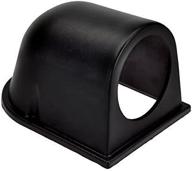
HOTSYSTEM Single Hole Dash Dashboard Gauge Mount Pod For Car Temperature, Voltage, Air/Fuel Ratio, Boost, Exhaust & More - Universal 2 Inches 52Mm Size With Black Cover

11 Review
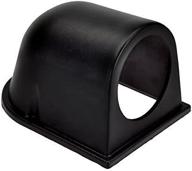
HOTSYSTEM Universal 2Inches 52Mm Single Hole Dash Dashboard Gauge Meter Mount Pod Holder Black Cover For Car Exhaust Gas Oil Water Temperature Temp Voltage Air/Fuel Ratio Turbo Boost Gauge

14 Review
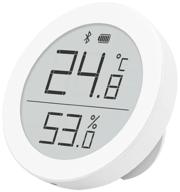
Room temperature and humidity sensor Xiaomi ClearGrass Bluetooth Thermometer white

13 Review

A/C Dash Button Repair Kit: 5PCS TIHOOD Stickers For Faded Auto Climate Control Decals Replacement With Perfect Adhesive Fit

10 Review
Another interesting products
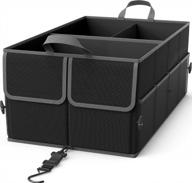
3-Compartment Cargo Trunk Storage Organizer By EPAuto: Maximize Your Car'S Storage Space

28 Review
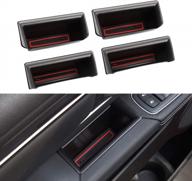
Motrobe Door Side Storage Tray For 2023 2022 2021 2020 2019 Dodge Ram 1500 Crew Cab Driver And Passenger Door Armrest Pocket Insert Organizer Set Of 4

30 Review
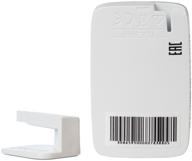
Transponder "T-Pass" TRP-4010 AVTODOR TOLL ROADS, black

46 Review

Tsumbay Car Backseat Organizer - PU Leather With Tablet Holder, Foldable Table Tray, And 9 Storage Pockets

33 Review

